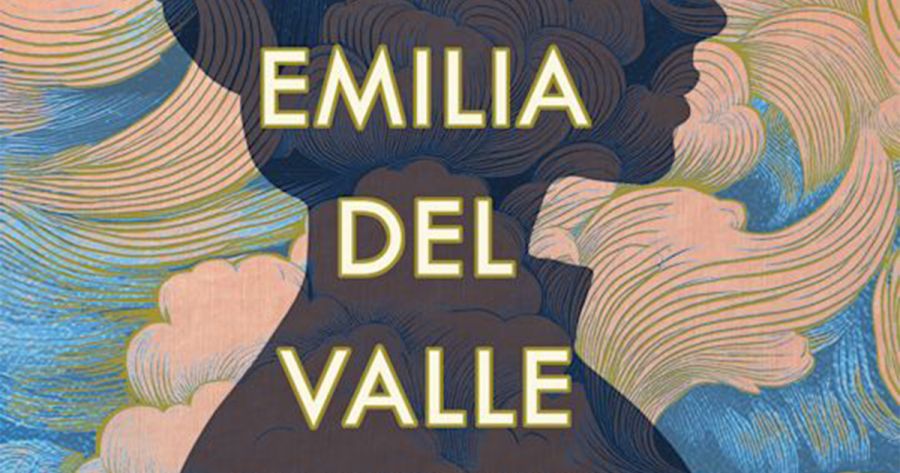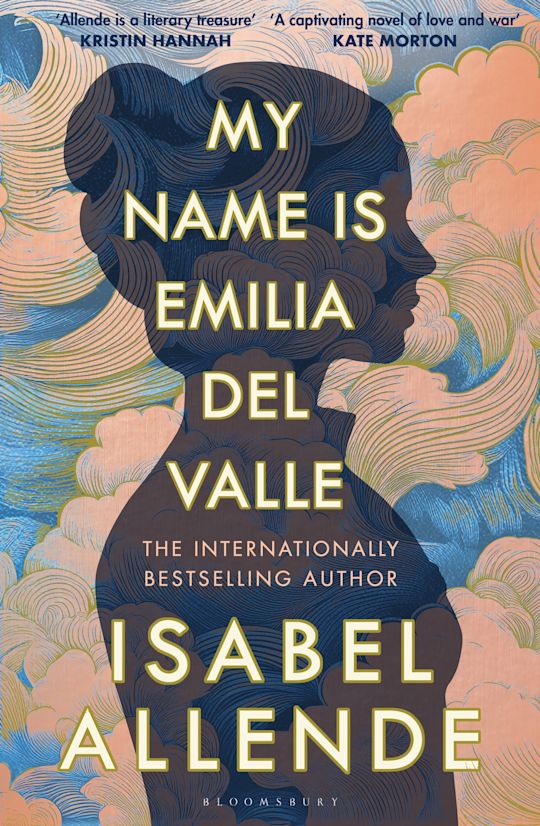
- Free Article: No
- Contents Category: Fiction
- Review Article: Yes
- Article Title: Women carrying corvos
- Article Subtitle: Allende’s civil war novel
- Online Only: No
- Custom Highlight Text:
Isabel Allende’s My Name is Emilia del Valle begins in the Mission District of San Francisco in the late nineteenth century and vividly evokes life among ‘that multicolored, polyglot multitude of emigrants’.
- Book 1 Title: My Name is Emilia del Valle
- Book 1 Biblio: Bloomsbury, $32.99 pb, 304 pp
- Book 1 Cover Small (400 x 600):

- Book 1 Cover (800 x 1200):

- Book 1 Readings Link: https://www.readings.com.au/product/9781526687654/my-name-is-emilia-del-valle--isabel-allende--2025--9781526687654#rac:jokjjzr6ly9m
From a young age, the image that Emilia holds of her estranged biological father is the pickled head of a villain in a sideshow exhibit: ‘The first jar held a human hand floating in a yellowish liquid. The second, a man’s decapitated head with the eyelids sewn shut, lips pulled back, teeth bared, and hair standing on end.’ Her mother explains to the young Emilia that this is the head of a bandit, ‘a reprobate like your father’. It is a haunting and recurring image that speaks to colonial frontier violence and the violence to come in the novel.
Emilia grows up to enjoy a humble but spiritually and intellectually rich childhood in the Mission with a loving stepfather. She tries her hand at writing dime novels, a genre popularised during the American Civil War of 1861-65, and becomes a commercial success, publishing under a male pseudonym. Her career in letters leads her to join The Daily Examiner in her early twenties, where she proves herself as a crime reporter, although still writing under the name of Brandon J. Price. Emilia’s journalism allows the novel to delve into different scenes in a picaresque fashion, including travel to New York by train where she writes about the lives of marginalised women, among them a psychic, an exotic belly dancer, dubbed ‘the divine odalisque’, and a family of ‘very short’ performers from a freak show. While in New York, Emilia is introduced to a pamphlet by Victoria Woodhull, the women’s suffrage leader and an advocate of free love. Unlike her mother, her independence and mobility allow her to explore and take control of her sexuality.
On the condition that she publish under her own name, Emilia negotiates an assignment to cover the 1891 civil war in Chile and uses the opportunity to track down her biological father, whom she has never met (in a parallel with the author’s own life). Emilia’s biological father’s name, which her mother insisted she keep, combined with her Spanish language and working-class upbringing, gives Emilia a passport to all levels of a highly rigid class society in Chile: ‘The upper-class families used the surnames of both father and mother to locate a person’s place in the social hierarchy and within the intricate web of relatives.’ Allende’s detailed depiction of the nineteenth-century Chilean civil war sheds light on the historical and colonial forces that shaped the overthrow of the author’s uncle Salvador Allende on 11 September 1973 and the contemporary Chilean political landscape. US and British interests and the nationalisation of Chilean minerals played a key role in both conflicts: nitrates figured in the UK-backed overthrow of President José Manuel Balmaceda in 1891 and copper in the coup that brought down the democratically elected Allende, a coup that was backed by Henry Kissinger and the CIA.
A major theme of the novel is the strength and camaraderie of women and the power of their stories and perspectives from the margins of history, which drive Emilia’s journalism and coverage of the war. Emilia’s journalistic courage is tested on the battlefield when she joins and writes about the ‘canteen girls’, a heroic band of women armed with corvos (curved double-edged blades) who carry water and food to the soldiers, tend to the wounded, convey messages, and at times take up arms to fight alongside the men. Allende powerfully extends the representation of women’s war experience by taking us into a hospital in Valparaiso where Emilia does volunteer work and is confronted by a ‘Dantean scene’ involving an amputation that she is required to assist in by administering chloroform to the patient.
Emilia’s male colleague from The Daily Examiner, also posted in Chile to cover the conflict, moves in different circles and covers the war from the opposing side, the fact that he is monolingual a constraint on his access to the local community. Emilia is determined to provide an objective account of the war, and the novel seeks to present a balanced view of events from these opposing journalistic viewpoints, delving into the political complexities and motivations on both sides.
Isabel Allende’s name is synonymous with magic realism, due in large part to the success of her first Márquez-inspired novel, The House of the Spirits (1982). While My Name is Emilia del Valle is a realist novel, magic realism nevertheless pulses beneath the surface of the action: in one scene grieving families turn to seances to speak to loved ones lost in the civil war; in another, Emilia experiences visions while subject to torture in prison. In keeping with the picaresque qualities of the novel, Emilia extends her travels into the remote wilderness of southern Chile where she lives alongside traditional Mapuche communities. Her local guide, Captain Janus, refers to ‘legends and magic’ he has witnessed and ‘many realities and parallel worlds’, which Emilia relates back to her own experiences. Magic realism in Latin American literature is influenced by Indigenous perspectives, and here Allende’s representations of the Mapuche are handled with sensitivity and incorporate Mapudungun language and cultural references, creating a third space beyond colonial borders where multiple world views can co-exist. My Name is Emilia del Valle continues to delight and surprise until the final pages, its depth and range making this a compelling and enjoyable read.


Comments powered by CComment